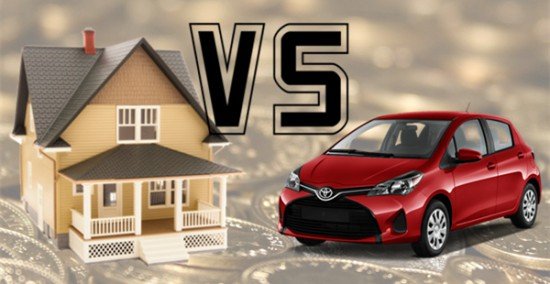(This article was originally written on 30 December 2015; information updated as of 6 January 2015.)
It’s official.
Malaysians are gearing up for the price hikes this year by taking advantage of the sales and buying up things before the clock strikes 12 on Jan 1, 2016. These items can range from everyday things like rice, cooking oil, toiletries, and office supplies to big ticket items like electrical appliances and cars. Heck, people are already buying air tickets for holidays more than a year in advance!
The scenario is similar to the week before the Goods and Services Tax (GST) was implemented back in April this year, when most of the shopping malls, supermarkets and hypermarkets saw their items – e.g. toilet paper, cooking oil, canned food, instant noodles, coffee, toothpaste, shampoo, skincare, stationery, clothes, etc – being swept off the shelves by the masses. In some extreme cases, it looked like people were preparing for a zombie apocalypse.
Anyway, back to the topic – cars. In the months following the GST implementation and Malaysian ringgit’s spectacular drop, the general public have been subjected to increased toll rates and public transportation fees, not to mention increased prices for groceries, food, clothing, toiletries and basically everything else. And now, cars are the next item to be added to the list.
Honda Malaysia had stated that it expects the selling prices for Honda vehicles to rise by 2% to 3% starting next January due to the weaker ringgit, while UMW Toyota Malaysia announced that it would increase selling prices of Toyota and Lexus vehicles between 4% and 16% next year depending on the models, citing increased costs due to the falling ringgit.
Foreign car brands are not the only ones to announce higher price tags in 2016. Local car manufacturer Perodua is set to increase the price for its Axia G model next year, and Proton is considering upping prices of its cars starting in January. The national carmaker said its prices needed to be raised to compensate for the effect of the lower ringgit, as many of the company’s raw materials were purchased in foreign currency.
The news has resulted in higher sales volume for vehicles in November 2015, which saw a marginal increase of 0.5% compared to October 2015, and this trend is expected to continue into December, prompted not only by the impending price increase of these popular car makes, but also the attraction of year-end promotions by dealers. The general mindset is, if you’ve been planning to buy a car, better buy it now before the price goes up. Automotive sales are expected to be sluggish next year, especially during the first few months, as people are weighed down by rising costs of living, extra spending for the festive season (Christmas and Chinese New Year), and back-to-school expenses, for parents with school-going children. The Malaysian Consumer Sentiments Index has been declining since 2009, but reported in September this year that it had touched a six-year low of 71.7 points in the second quarter (2Q15), which saw companies across various sectors posting dismal earnings, especially in non-necessity sectors such as jewelry and luxury goods.
Nevertheless, it should be noted that unlike property, cars are depreciating assets, but deemed a necessity in Malaysia as a way to get around and go to work, where people use their hand-earned money to pay their car loans. It’s a vicious cycle that many are familiar with but unable to break free from. Despite the plunge in crude oil prices in 2015, for the man-on-the-street, the slight drop in petrol prices is not enough to compensate for the price hikes in every other aspect of daily life. And even though industry experts have predicted that the property sector in Malaysia is expected to remain “flat” in 2016, with housing prices staying flat or show marginal growth at best, many young people will be unable to afford paying for both a car and a house at the same time. Thus, they are forced to rent a room or house instead, and pay the installments for car loans in order to have a means of transportation to work.
The image above was circulating online among Malaysian netizens in December 2015, and it shows just how much disparity it comes when comparing the price ratio of housing to vehicles between Malaysia and Australia. In Malaysia, the price of a median-priced RM250k house is equal to two (let’s assume it’s Honda Civic) cars costing approximately RM110k, whereas in Australia, the median A$660,000 house can buy 22 Honda Civics. (For further reference, a US house equals to 12 Honda Civics, while a UK house can buy 16 Honda Civics.) Housing in Malaysia is not cheap (I mean, where are you supposed to find a RM350k house in Klang Valley, let alone a RM250k one?!) but our cars are much more expensive in comparison. And the trouble here is that while citizens of other countries can rely on public transportation to get around, in most parts of Malaysia, having a private vehicle is a necessity in order to go to work or basically go anywhere, thus driving up (pardon the pun) the cost of living – and we still have to factor in petrol, maintenance, road tax, insurance and tolls in addition to the monthly repayments, all of which can be used to pay for a housing loan instead of a depreciating asset.
Therefore, it’s a struggle for most young working adults in Malaysia, choosing between transport and property. Both are equally important, one as a means of gaining employment, the other as security for the future. Some may find it a clear-cut choice, while to some, it’s a chicken-and-egg question. Decisions for such big purchases are never easy, and now it is even more so.
In a nutshell……
Car brands that will see price increase in 2016:
- Proton
- Perodua
- Honda
- Toyota
Car brands that will NOT see price increase (for now):
- Volkswagon
- Mercedes-Benz
- BMW/MINI
Source
Paul Tan’s Automotive News (link, link)
The Edge Markets (link)
The Malaysian Insider (link; link, link)
The Star Online (link; link; link)
The Sun Daily (link)









